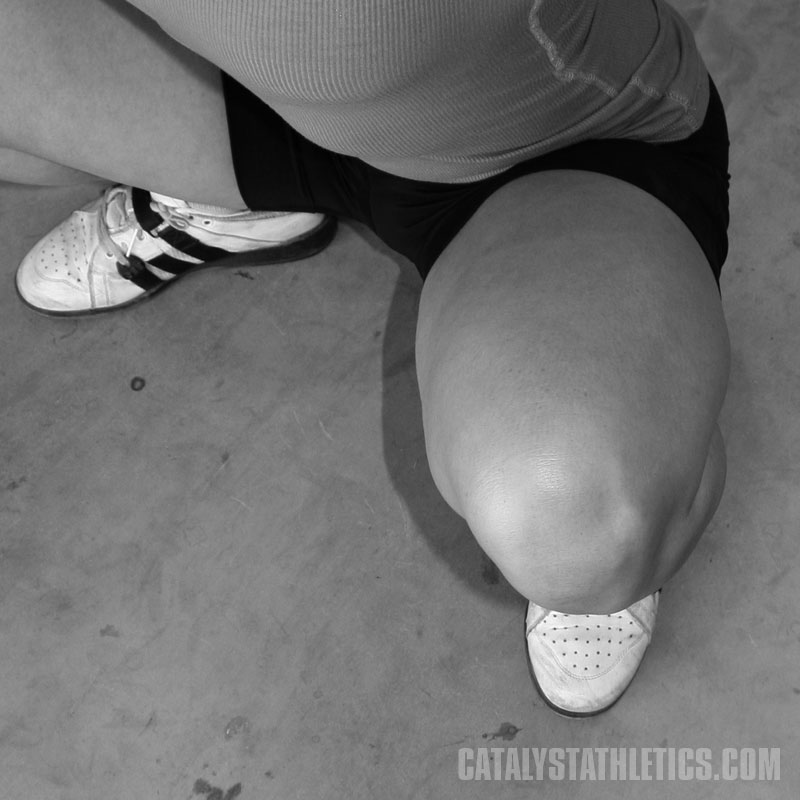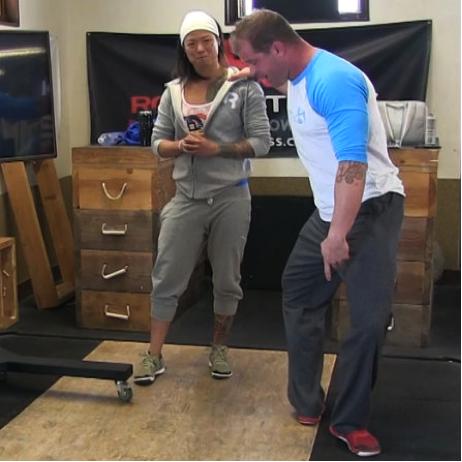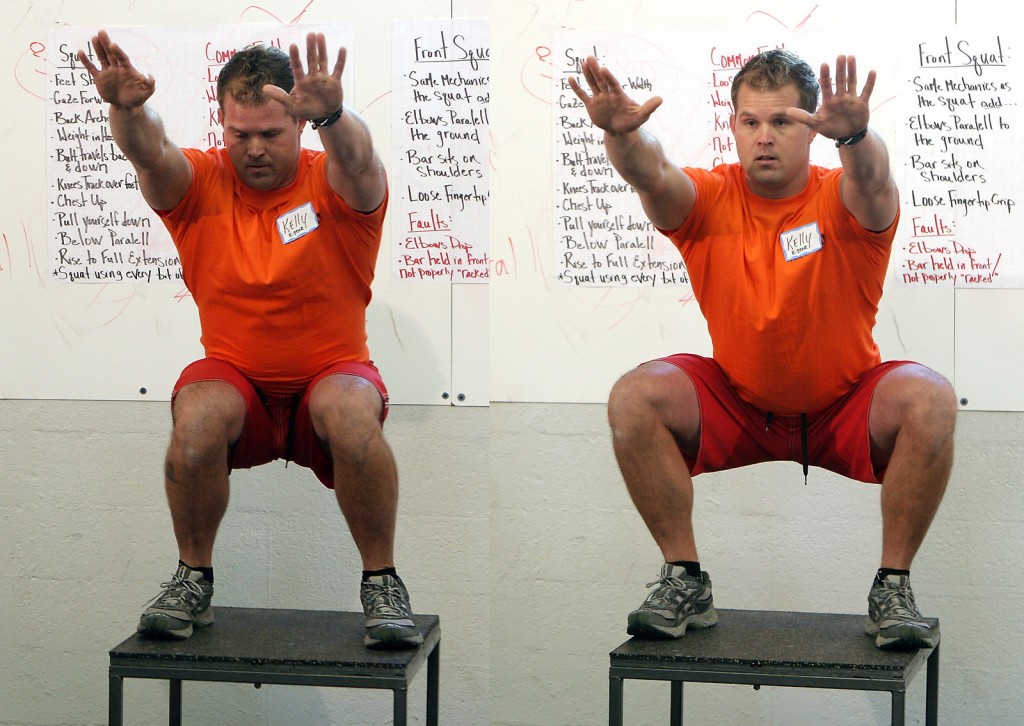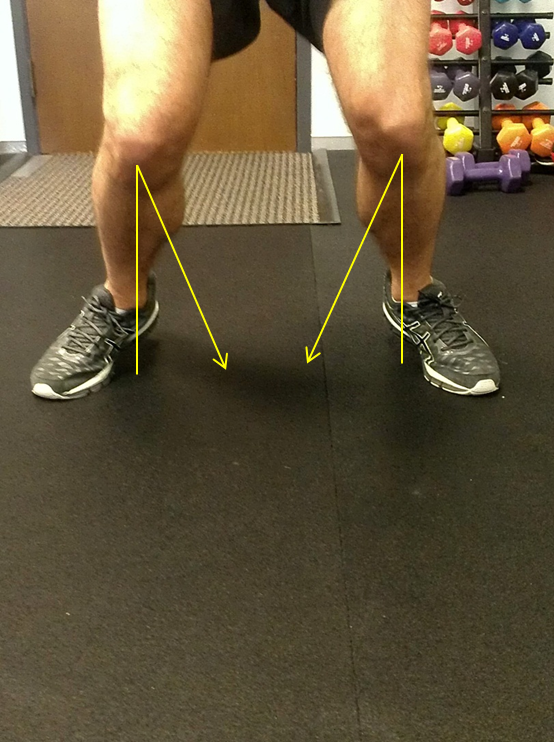Recently, there has been debate over the safety and efficacy of the common cue ‘Knees Out’, used by CrossFit coaches the world over. Criticism has come from renowned Olympic weightlifting coach Bob Takano and powerlifter Dan Green, among others, who adopt a ‘Knee In’ squat technique, citing the success of the Chinese Olympic weightlifters who employ this. They advocate for a slight knees in moment as you push out of the bottom of a squat to generate a stronger leg drive and speed.
Watch this video here to see Dan Green explain the ‘Knee In Squat.’
The Knee In squat may prove to be a useful tool for professional lifters and does not suggest that the knees should be caved in for the entire up-down movement of the squat. However, it is difficult to teach and to scale and is not useful in the context of a CrossFit class where we are teaching a general population to squat safely.
I am more concerned with addressing criticism of the ‘Knees Out’ cue. The same coaches that have advocated for the Knees In squat have raised concern that ‘Knees Out’ causes individuals to compensate for mobility issues by pushing the knees out excessively and externally rotating the feet and hips to their limits to allow a deeper squat.
While you may hear your coach say “Knees Out!”, please do not take this to mean you must push your knees out to the point that you rotate on to the outsides of your feet or to the limits of your joints, as Starrett is pictured doing above. If the experts are confused over the meaning of the cue, I figured you guys might be too, so here I hope to clear up any confusion over the real meaning of Knees Out.
One of the fundamental principles of the squat is that the knees should track in line with the feet for the duration of the movement. In the bottom position of the squat, we want the top of the quad to run parallel with the foot. Take a look at the picture below to see what this looks like. If the knee is excessively pushed out it will violate this rule.
 http://www.catalystathletics.com/article/1826/Squatting-Valgus-Knees-The-Knees-Out-Cue-Facebook-Coaches/
http://www.catalystathletics.com/article/1826/Squatting-Valgus-Knees-The-Knees-Out-Cue-Facebook-Coaches/
Read this article to see how Greg Everett of Catalyst Athletics weighs in on the debate.
Kelly Starrett is a well-known proponent of the Knees Out cue. However, he emphasises that Knees Out is not a technique and if taken literally, defies the fundamental principle of knees over toes.
So why do we still say “Knees Out!”?
Knee valgus collapse, or medial knee displacement.
This refers to the caving-in of the knees, often as you squat or on a landing. I see it on box jumps, lunges, rowing and the set up for the clean and snatch, to name a few. It is a well known risk factor in ACL injuries, patellofemoral (knee) pain, knee osteoarthritis and general knee cartilage and meniscus injury. As Starrett jokes, technically it isn’t Knees Out we are coaching, but Not Knees In.
Starrett demonstrates knee valgus on the left, and Not Knees In on the right
Knees Out encourages strong external rotation torque of the hips, which creates a stable hip and encourages a stable, upright torso in the squat. Knees Out helps an athlete ‘screw’ their hips and feet into a stable position before they initiate a squat, and maintain this for the duration of the movement.
Two often discussed causes of knee valgus are inadequate ankle dorsiflexion mobility and poor hip stability and glute strength. It is actually hip and ankle stability, not the knees that are the primary target of the Knees Out cue.
Poor ankle mobility prevents the tibia (and knee) from tracking forward properly, resulting in compensation from the foot. The foot will pronate (or roll in), causing the tibia to internally rotate and thus the knee to cave in or push forward excessively to increase range of motion on the squat. This is a difficult concept to explain to an athlete mid-WOD. Knees Out often helps correct this fault by reinforcing a stable arch as the ankle is pushed out with the knee, although the squat may not be as deep. A serious deficit in ankle dorsiflexion mobility will take more than hearing “Knees Out!” to correct and this is when mobility drills will prove necessary to achieve a full squat.
Here the feet have rolled inward and the heels have come off the ground. The knees have rolled in and forward to allow greater depth in the squat, but at the expense of the joints.
Poor hip strength, sometimes in combination with overactive hip adductors, prevents stabilization of the femur. This causes the hip to be pulled into adduction and internal rotation, resulting in knee valgus. I see knees caving in every single CrossFit class I coach. If I were to say “Stable Hip!” to attempt to address this, I’d be met with a lot of blank stares. Instead, Knees Out encourages an athlete to externally rotate and stabilize their hip.
Click here to listen to Starrett discuss this issue in depth.
I will be posting corrective exercises to address these two potential causes over the next two weeks, so watch out for them!
Remember, Knees Out does not mean push the knees out excessively as you squat. It means maintain tension and a stable, externally rotated hip and stable arch as you squat down and drive up out of the bottom.
Knees Out = Knees Not In = Healthy Knees, Stable Hips and Feet














































